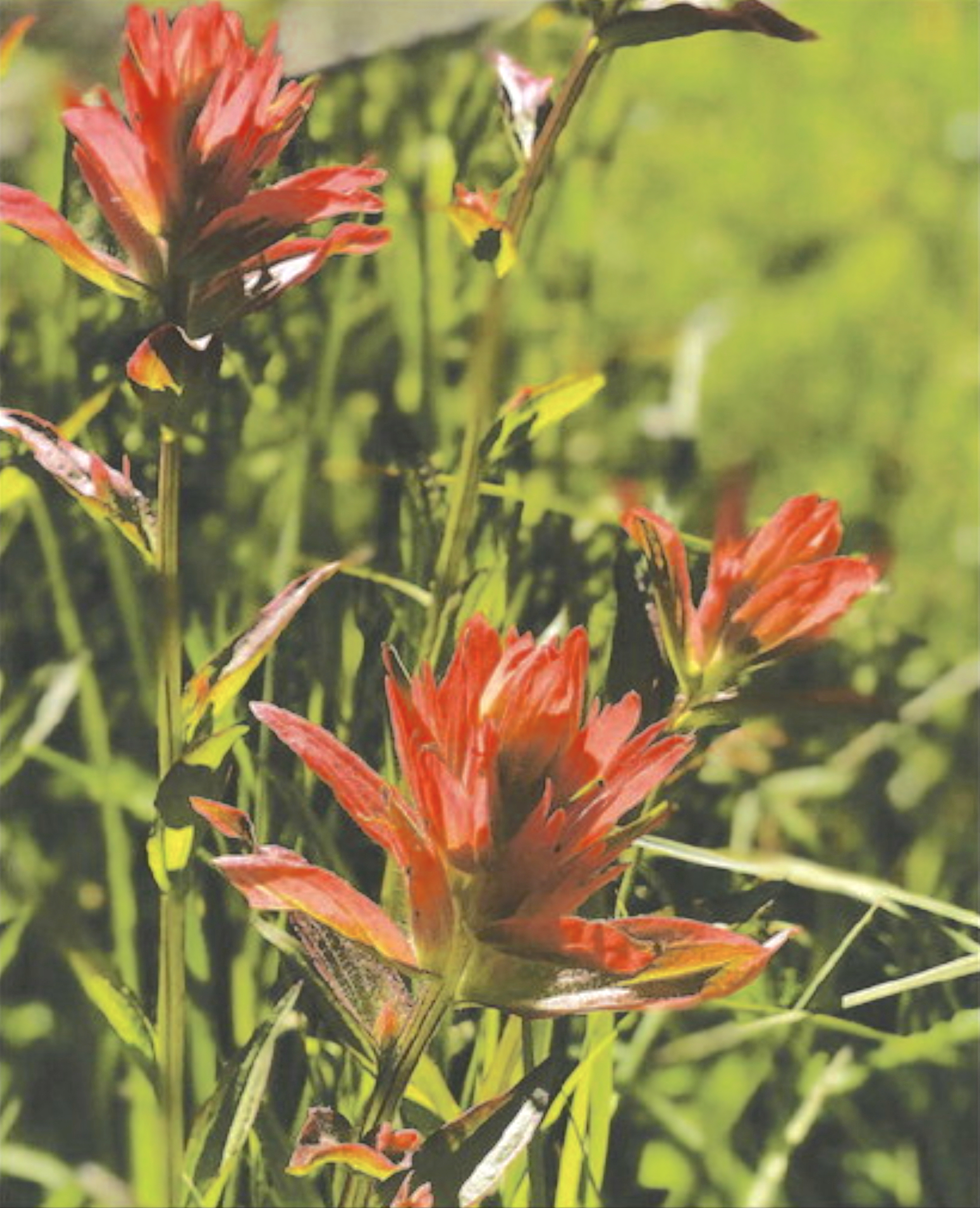Land management agencies: Leave wildflowers where you find them

Indian paintbrush and other native plants play important roles in the ecosystem. People should not pick flowers from city-owned property or U.S. Forest Service lands. Buffalo Bulletin file photo.
BUFFALO — Wildflowers dot hills, trails and roadsides each June and July in Johnson County.
The rainbow hues are something that Heather McIntosh looks forward to on her near-daily walks along the Clear Creek Trail at Turkey Lane. In particular, the red-orange Indian Paintbrush – the state flower – stands out.
So she noticed recently when one day, the flowers were there, and the next day, they were gone. The same thing happened last year, she said in an interview.
“There’s only four plants up there you can see from the trail, and they were hacked off last year,” McIntosh said. “I’m like, wait, why would anyone do that? It’s not even going to make it to their car.”
Seeing the flowers clearly snipped from their stems rather than eaten by a passing animal, she decided to take action. She called local land management agencies, and the Buffalo Trails Board, which manages the Clear Creek Trail System. It turns out, McIntosh’s experience prompts a public service announcement: Don’t pick the wildflowers.
Keith Gliner, secretary of the Buffalo Trails Board, said in an interview that the board recently considered erecting some signage along the trails to prevent trail users from cutting or picking flowers. He said he has heard from a lot of people about the issue this year, specifically on the Mentock Trail.
“The issue came up at a board meeting, and we decided people should know, but clearly they don’t,” he said. “We’ve definitely noticed it becoming a bigger problem. We discussed signage, hoping we don’t need to, but we may have to.”
Gliner clarified that people should not pick flowers from any city-owned property.
The same goes for U.S. Forest Service-managed lands, said Sara Evans-Kirol, public affairs specialist with the Bighorn National Forest.
It is illegal to take native plants from Forest Service lands, according to the agency’s website. Taking flowers affects pollinator species that depend on the plants for food and cover, and these plants typically do not survive being transplanted. It also reduces the presence of wildflowers over time, because digging, picking or collecting them or their seed reduces their ability to reproduce.
“As an alternative, we suggest to photograph or do a drawing or painting of them,” Evans-Kirol wrote in an email. “Photos and drawings last a lot longer and will help ensure that pollinators and flowers alike will be there in the future.”
On Bureau of Land Management-managed lands, picking wildflowers, berries or other plants is technically legal in small quantities for personal use, but it is not encouraged, according to Tyson Finnicum, public affairs specialist with the agency’s High Plains District office.
“We ask people to be considerate of other public land users and leave them in place – both for others to enjoy and for the benefit of the ecosystem,” he wrote in an email. “Indian paintbrush and many other native wildflowers play a vital role in local plant communities and pollinator health, and improper collection can reduce their ability to regenerate.”
The Forest Service, BLM and other federal agencies encourage Leave No Trace principles, which essentially tell users to leave a landscape better than they found it – that includes leaving rocks, plants and other natural, cultural or historic objects where they were found.
On the flip side, Johnson County Weed and Pest is encouraging – and paying – residents to pick invasive vegetation. While native plants support local ecosystems and wildlife, invasive plants tend to spread easily and aggressively and harm the landscape.
Weed and Pest and state and federal land management agencies partner to put on the county’s annual weed bounty. Participants can collect clear plastic bags from the Weed and Pest office and collect problem invasives, including common mullein, Russian knapweed and houndstongue and earn $1 per pound, and orange hawkweed and oxeye daisy for $1.25 per pound.
While invasive plants can easily proliferate, native plants such as the Indian Paintbrush can struggle to establish.
McIntosh plants them in her garden – of nine plants, three have survived, she said.
“Please don’t pick the wildflowers, so people can enjoy them for months to come,” she said. “Maybe it looks romantic from some movie standpoint picking flowers for a loved one, but Wyoming paintbrush would stay for months blooming, and all the people could enjoy it.”
This story was published on July 10, 2025.






